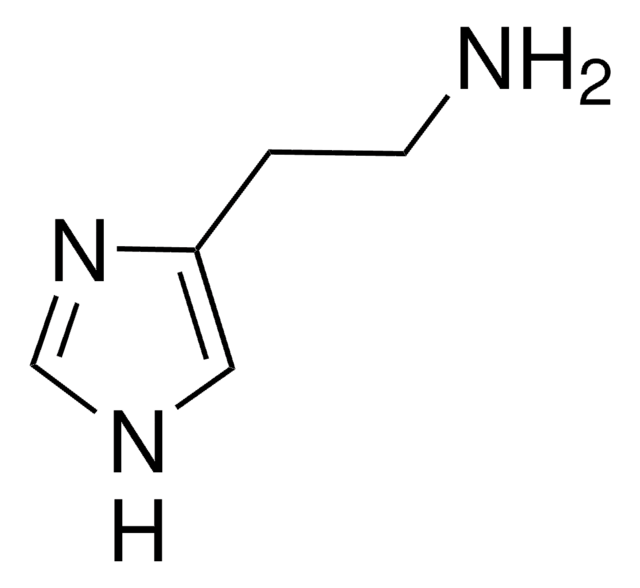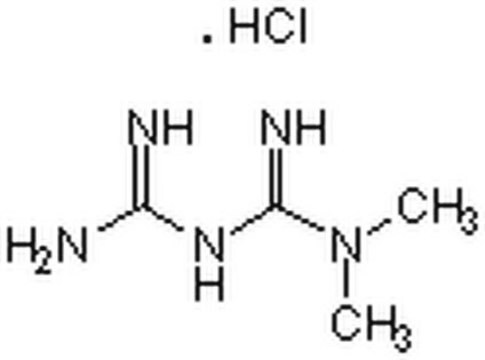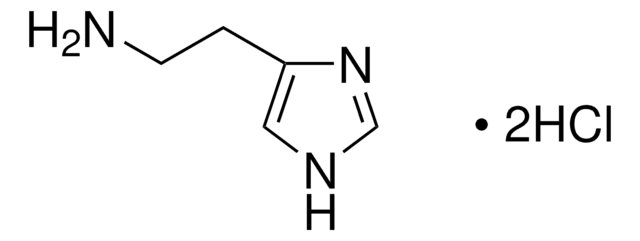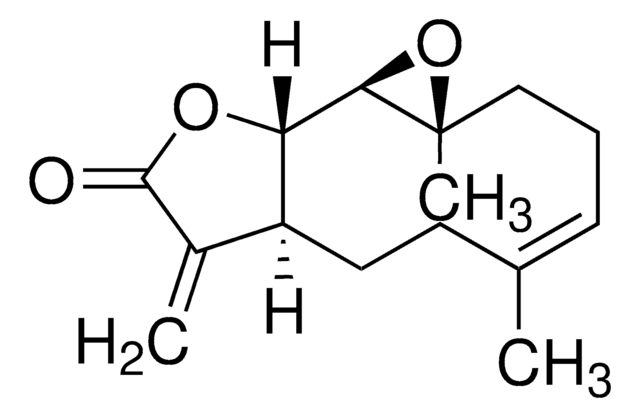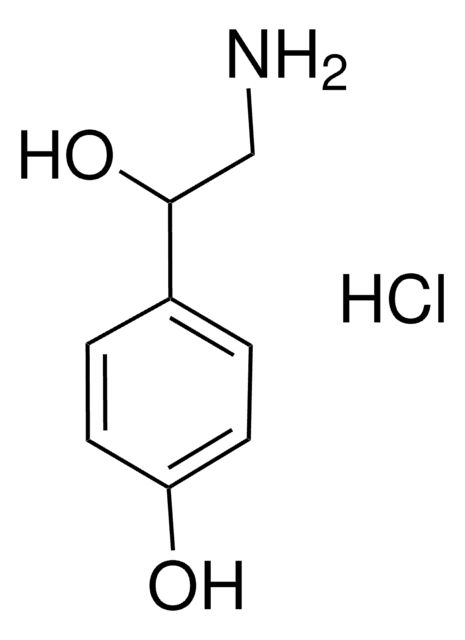80345
Tyramine
analytical standard
Synonym(s):
2-(4-Hydroxyphenyl)ethylamine, 4-(2-Aminoethyl)phenol, 4-Hydroxyphenethylamine
About This Item
Recommended Products
grade
analytical standard
Quality Level
Assay
≥98.5% (GC)
98.0-102.0% (wt., NT)
shelf life
limited shelf life, expiry date on the label
technique(s)
HPLC: suitable
gas chromatography (GC): suitable
bp
175-181 °C/8 mmHg (lit.)
mp
160-162 °C (lit.)
suitability
conforms to structure for Infrared spectrum
application(s)
cleaning products
cosmetics
flavors and fragrances
food and beverages
personal care
format
neat
storage temp.
2-8°C
SMILES string
NCCc1ccc(O)cc1
InChI
1S/C8H11NO/c9-6-5-7-1-3-8(10)4-2-7/h1-4,10H,5-6,9H2
InChI key
DZGWFCGJZKJUFP-UHFFFAOYSA-N
Looking for similar products? Visit Product Comparison Guide
Application
Biochem/physiol Actions
Signal Word
Warning
Hazard Statements
Precautionary Statements
Hazard Classifications
Eye Irrit. 2 - Skin Irrit. 2 - STOT SE 3
Target Organs
Respiratory system
Storage Class Code
11 - Combustible Solids
WGK
WGK 3
Flash Point(F)
Not applicable
Flash Point(C)
Not applicable
Choose from one of the most recent versions:
Already Own This Product?
Find documentation for the products that you have recently purchased in the Document Library.
Customers Also Viewed
Protocols
HPLC Analysis of Biogenic Amines on Ascentis® RP-Amide
Our team of scientists has experience in all areas of research including Life Science, Material Science, Chemical Synthesis, Chromatography, Analytical and many others.
Contact Technical Service


